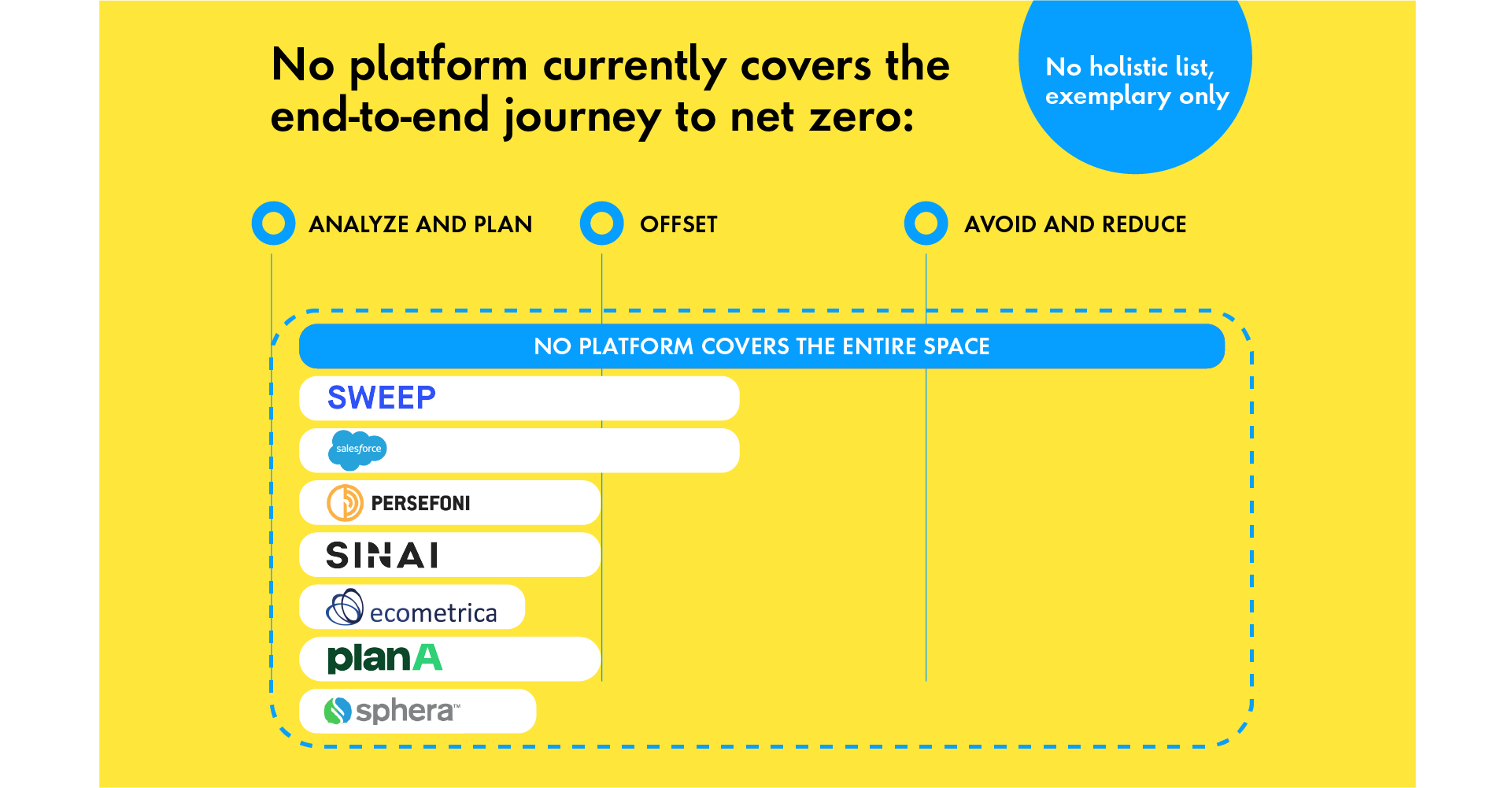What issue can we solve for you?
Type in your prompt above or try one of these suggestions
Suggested Prompt



Energy & Commodities
The Future of Carbon Management Platforms: Enhancing Decision-Making
The Future of Carbon Management Platforms: Enhancing Decision-Making
Michèle Schwarzer

Executive summary:
- Businesses currently use carbon management platforms to ensure compliance with environmental regulations
- Though the current trend in carbon management platforms includes features that equip businesses with the ability to integrate data, collect mobile data and forecast, organizations have an opportunity to enhance the execution of the strategy surrounding "avoiding and reducing" emissions
- Platforms should provide businesses with decision-making tools for executive management, helping to future-proof organizations and create new value
In today's era of energy transition and increasingly stringent environmental regulations, numerous businesses are turning to carbon management platforms to make better decisions to ensure compliance. These platforms are designed to tackle challenges related to identifying and collecting relevant data in a centralized location and reporting on it in a compliant manner.
However, carbon management platforms do not have to be solely a compliance tool. Instead, they have the potential to generate new value for organizations as a tool to empower executives to make decisions that promote efficiency, collaboration and integration. So, how can future carbon management platforms become a powerful decision-making partner?
Carbon management platforms currently ensure compliance, not value
Businesses face accelerating pressure to minimize their CO2 emissions as the world races toward net zero. Initiatives in the United States have aimed to cut carbon emissions by 65 percent by 2030, while the European Union has its sights set on a carbon-neutral future by 2050.
To keep pace with these goals, businesses rely on carbon management platforms. These platforms measure and forecast emissions, and businesses use this data to gain insights into how well they are complying with regulations and decarbonization goals.
While these platforms are crucial for compliance, they have the potential to offer more value to businesses. Carbon management platforms are most effective when they are paired with an effective strategy, particularly one focused on efficiency and value creation. Indeed, decarbonization is as much about sustainability as it is about prioritizing efficiency in operations. According to the World Business Council for Sustainable Development, companies should “treat carbon like money”: Every ounce of lost carbon translates to lost dollars.
Carbon management platforms can thus play a crucial role in business operations that go beyond simple compliance reporting: They can offer insights that enable executive decision-making.
End-to-end emission management is a crucial aspect of strategic decision-making
As a decision-making tool for executive management, carbon management platforms have the potential to help future-proof businesses and create value. This can be achieved by providing end-to-end services and features that encompass the entire journey to net zero, including analysis and planning, avoidance and reduction, and offsetting.
The "avoid and reduce" aspect presents specific challenges, which can vary depending on the industry:
For companies with multiple offices, the transition from fossil-based to renewable energy may be necessary to reduce their emission footprint significantly. Other companies might need to evaluate their existing suppliers to determine how they can reduce their emissions footprint without compromising the quality of the products and services they procure. In general, avoiding and reducing emissions can involve implementing relatively simple measures to decrease emissions.

For energy-intensive companies, this area can pose more complex challenges, as concrete emission reduction actions may be harder to implement. These companies may need to assess their production facilities and upgrade existing technology to more efficient alternatives. This can be particularly challenging for carbon-intensive industries, as new technologies that do not yet exist or are not yet widely available may be required.
Carbon management platforms are ideally suited to address these challenges and assist companies in reducing their emissions. However, current carbon management platforms offer limited services in this area.
Trends in the carbon management platform landscape point to the direction in which the market is heading. Over the past year, most platforms have rapidly evolved and introduced innovative features in the following areas:
-

Figure 1: Platform capabilities
Analyze and plan
1. Scope 3 reporting and data integration: Scope 3 emissions require data integration between companies and suppliers. Platforms employ APIs and data sharing for accurate tracking and monitoring throughout the product lifecycle.
2. Employee engagement and mobile data collection: Enabling task delegation, user-to-user communication and mobile data collection can help make platforms accessible to more teams and foster collaboration between them.
3. Holistic simulators and forecasting capabilities: Companies need an overview of the costs and potential cost savings associated with various net zero planning scenarios. Platforms innovate by integrating carbon pricing tools and incorporating trends into forecasts, which enables executives to make confident decisions.
4. Interactive dashboards: Platforms are increasingly using graphical and interactive tools to help decision-makers grasp net zero pathways, making it easier to gain buy-in from non-expert stakeholders.
Offset
Companies invest in climate-positive projects via voluntary carbon offsetting market to supplement emission reduction efforts. Despite vetting through international benchmarks like the Gold Standard, companies must be cautious of reputation risks such as greenwashing.
Though these features are excellent starting points, the actual execution of the strategy surrounding "avoiding and reducing" emissions currently lacks a central location where a company can analyze and plan, reduce and avoid, and offset emissions from one end to another. Consequently, emission management platforms will need to evolve in order to generate maximum value for companies.
Unlock value through emission reduction and avoidance
Given the lack of an end-to-end view in current carbon management platforms, they are missing an opportunity to generate additional value for companies. The emission reduction and avoidance space is particularly challenging for companies to maneuver. To help companies overcome barriers and navigate this space more effectively, a broader range of features is necessary. These features should bring a clear value to companies with the goal of emission reduction and illustrate the direction that carbon management platforms need to take in the future.
Some exemplary features include the following:
Build a comprehensive, integrated strategy to navigate emissions journeys
What does an end-to-end emission journey look like? It enables a holistic communication ecosystem once all emission efforts are in place—and it all begins with a strategy:
- Data strategy and integration: Analyze data flows related to emissions and identify existing data to recognize missing data, determine where and how to obtain this data and integrate data flows optimally
- Platform vendor selection: Take a vendor-agnostic view and collaborate to understand the needs and requirements for a carbon management platform
- Platform customization and innovation: Build customized, innovative features and integrate them into the platform
- Human-centric platform integration: Develop a human-centric approach that considers and prioritizes the needs of human users to drive adoption, delivering optimal outcomes and value for money
- Communication strategy: Target the relevant audiences for our clients with the right messages to communicate emission ambitions, efforts and results
By taking a holistic approach to carbon management across steps like analyzing and planning, reduction and avoidance, and offsetting, businesses can achieve their net zero goals while maximizing value.
As a digital transformation partner, Publicis Sapient helps businesses navigate their net-zero journey one step at a time. Reach out to learn how Publicis Sapient can help strategize to enhance executive decision-making.
Related Reading
-
![]()
Digital Leaders in Energy Talk Net Zero
What are your competitors planning? Where are the opportunities? Find out in our new report, featuring the opinions of 375 digital leaders at energy suppliers.
-
![]()
How Companies Are Achieving Their Sustainability Goals
A cross-industry report suggests that executives are optimistic about implementing their sustainability goals.
-
![]()
Demystifying Carbon Markets: A Video Series
Explore the function of Carbon Markets, how to invest in them and what opportunities they hold for your business to accelerate your Net Zero goals.








